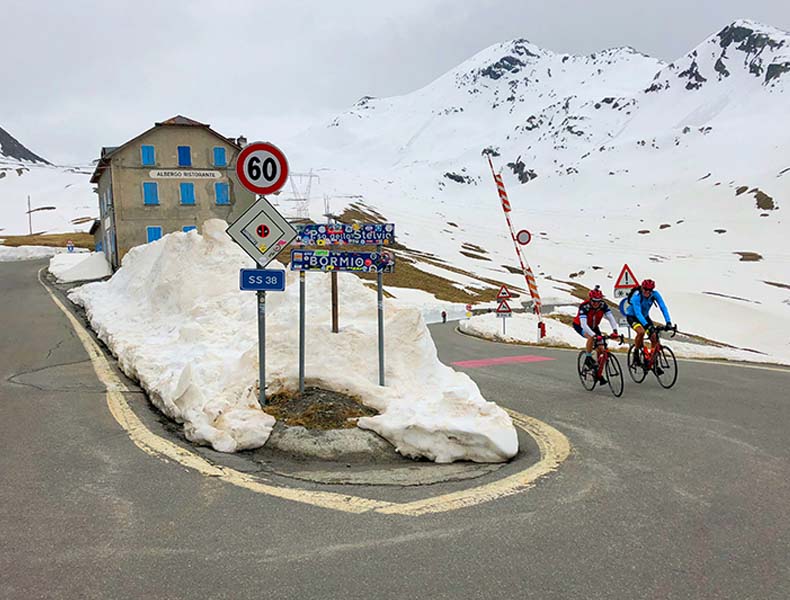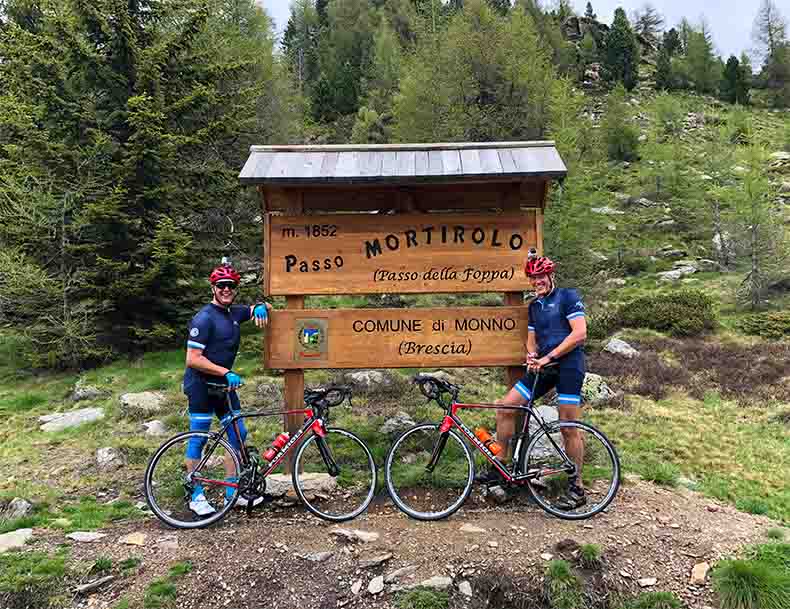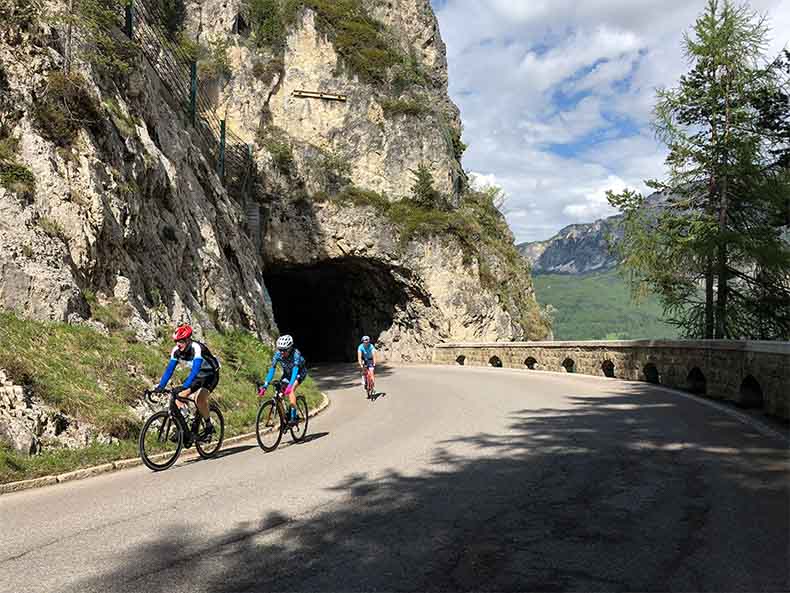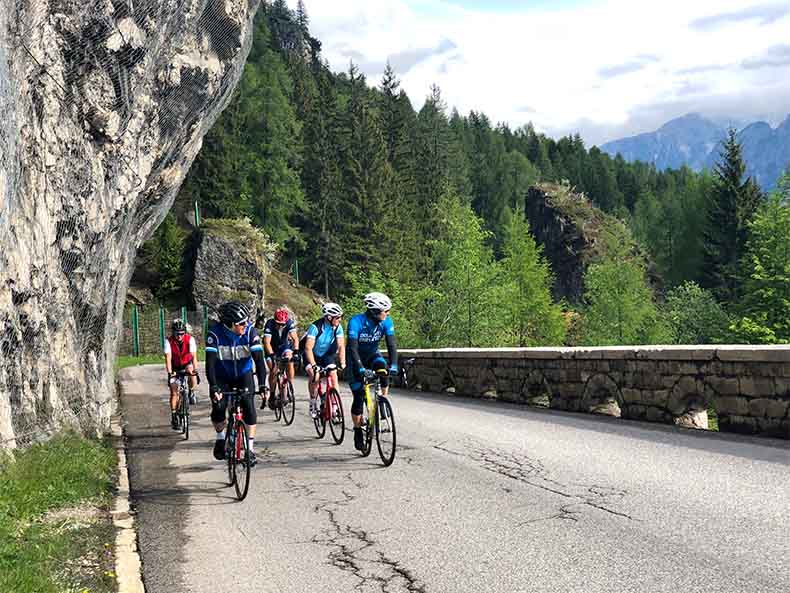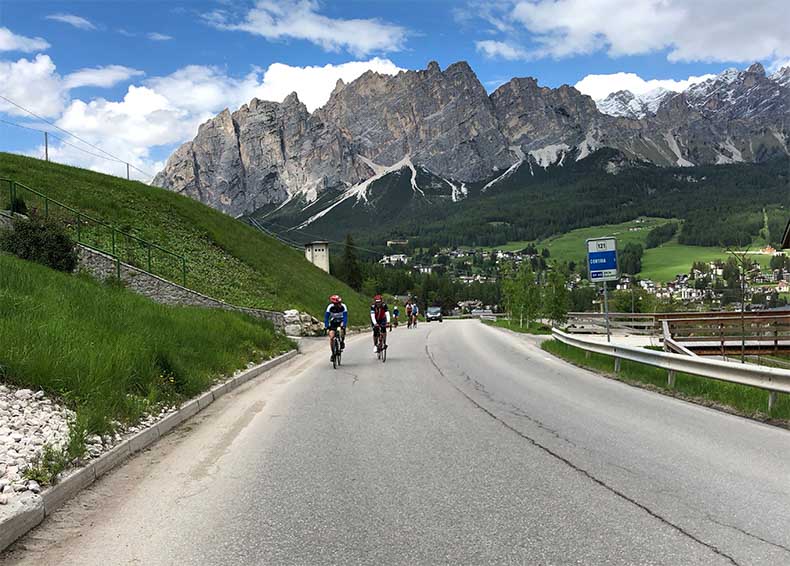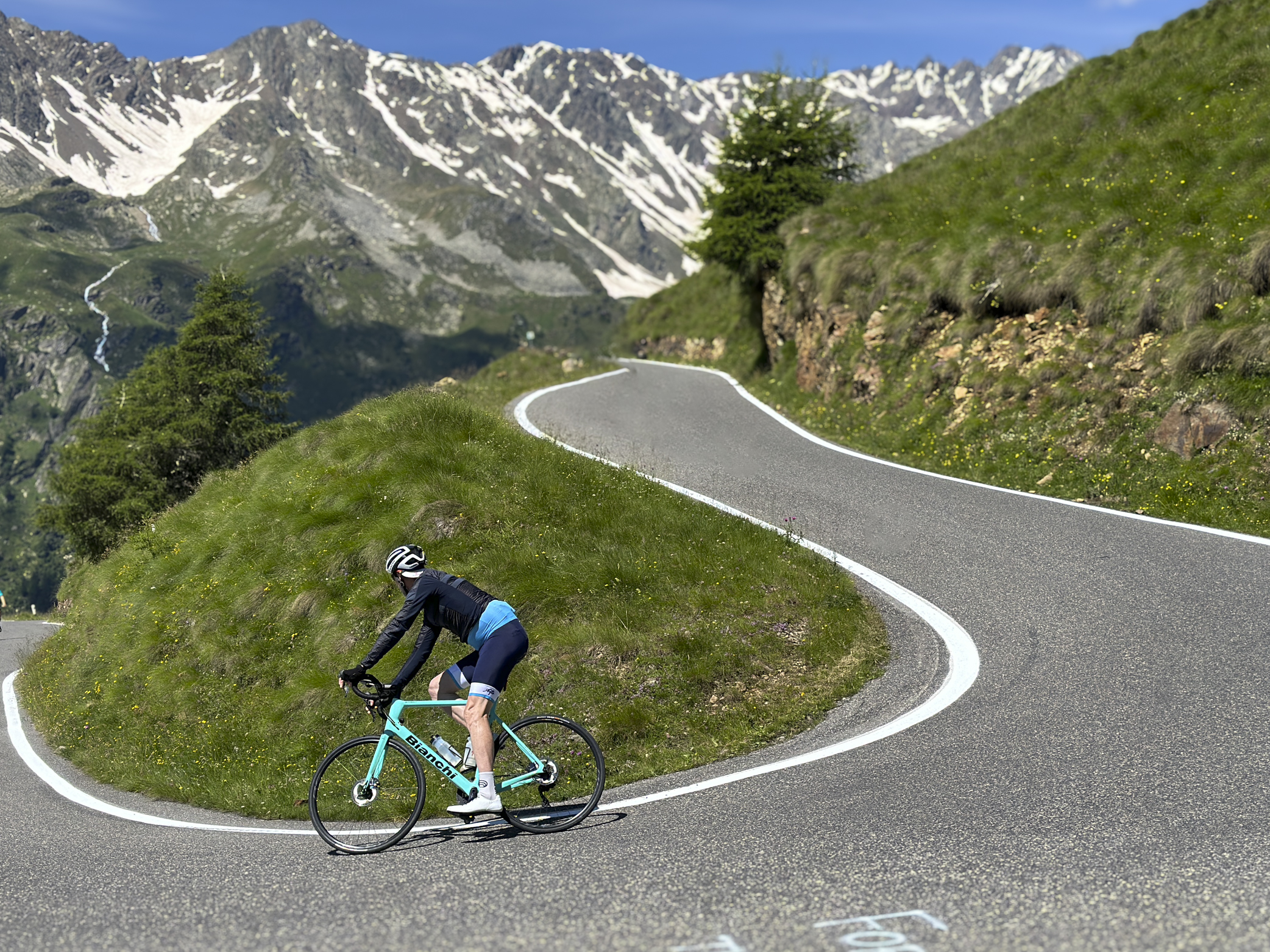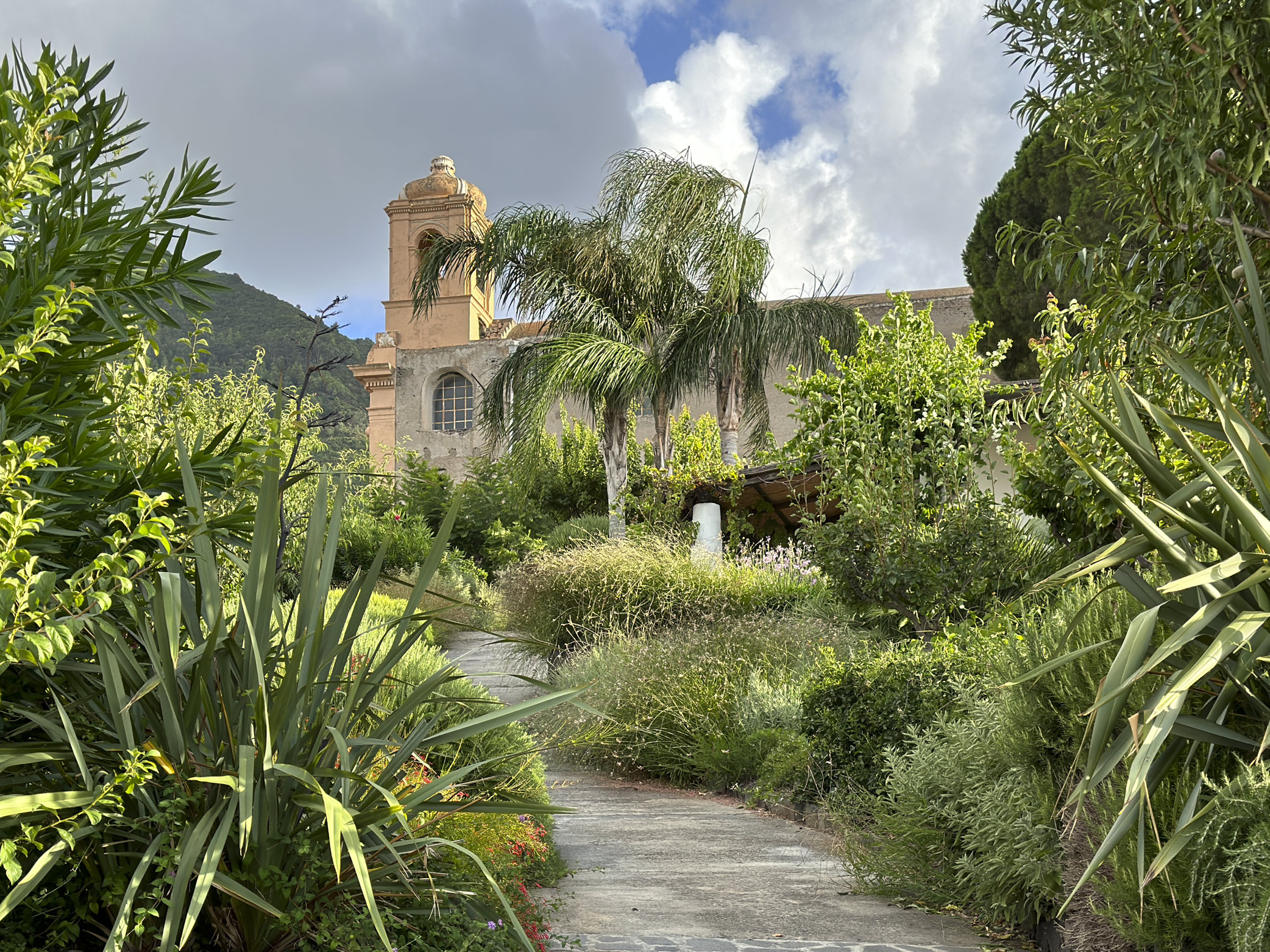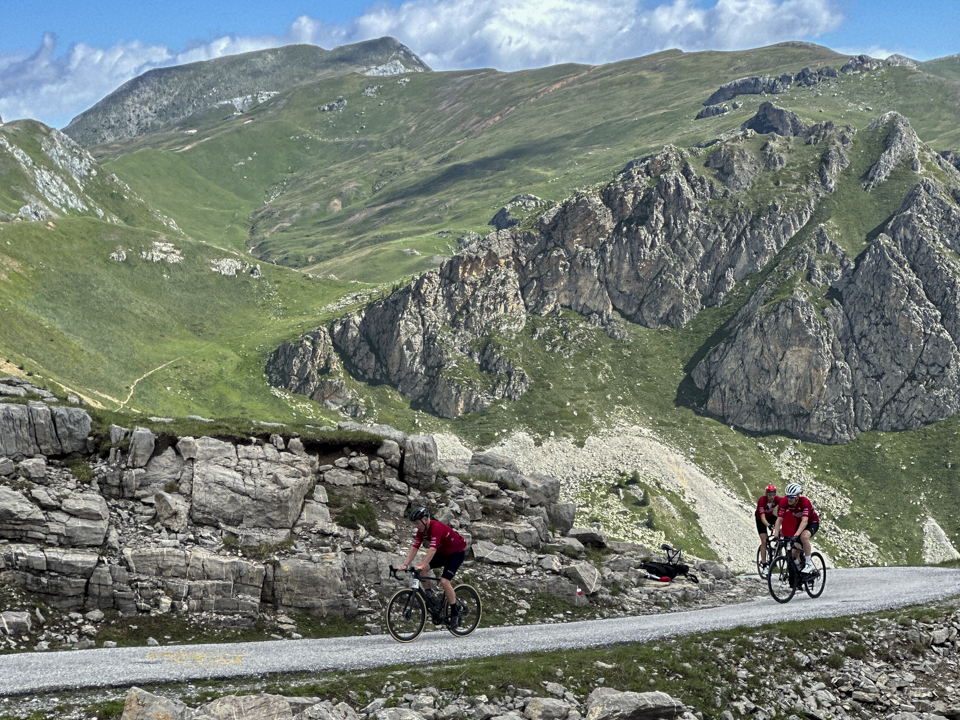If you’re a first timer to the Italian mountains and participating in a Giro d’Italia cycling tour, there are a few things to consider in your preparation. Below is our list of the top 5 considerations for any Italian cycling tour to the Alps and Dolomites.
1. Do The Training.
We know this might seem a little obvious, however you’d be surprised how often people say they have been ‘too busy to read the lead-up emails and suggested training goals, let alone do the training’. Consequently they are under done and have to spend a bit of time everyday in the van, or end up in a world of pain. When reviewing the distances and profiles for each day, it’s important to not look at each day in isolation, but rather look at the overall tour profile. If you are not used to riding everyday and don’t have enough climbing training in your legs, the build up of fatigue from riding day after day can catch up with you later in the tour.
2. Mental Strength.
A 22km climb can seem daunting, but with the right attitude and mental approach, it can be conquered. As can continuous climbs over 8 solid days of riding.
We’ve recently had a prospective guest mention to us that at 6’2 and 100kg’s he knows he’s not built for the hills, but he loves them because that is where the fun is, in the challenge.
With this thinking, everything is possible.
3. Equipment: Hire vs. Your Own
There is an interesting for and against debate on having your own bike that you know and is set up for you vs. the convenience of hiring a bike in Italy. Our view is regardless of how long you are travelling, it’s always better to take your own bike, particularly when you are taking on the challenge of climbing mountains on an Italian cycling tour. Your own bike is a known quantity and eliminates any concerns you may have that your hire bike is not the perfect fit or is not what you were expecting.
The handful of times you are challenged by taking your own bike (ie; mainly transport and hotel transfers) are far outweighed when you hit a 16% section of a mountain and there is still 6km to the top. On your own bike, there are none of the possible little niggling things that keep popping into your head as you spin to the top.
4. Your Own Pace.
Everyone if different; from weight, to height, power to weight ratios and different thresholds of fatigue.
So when you hit the base of a climb, don’t try keep pace with someone else, only to blow up a third of the way into it. Find your own rhythm, and don’t be concerned with where you are in the group as there will always be a guide at the back of the group, and don’t be concerned with where you “finish” on the climb as that’s not a judge or indicator of how much you’ve enjoyed the challenge, or fun you have had getting to the top.
5. The Rest Day.
At the end of the day, this is your Italian cycling holiday, and while there will be a ride happening everyday, you are able to make the decision to take the lighter ride option or not ride at all and rest up for a day. We understand that sometimes it’s nice to have some extra time to just soak up the beautiful villages that you’ll visit.
With the Giro d’Italia cycling tour, we do have to run at a fairly hectic pace each day as we need to be in specific locations at certain times to keep up with the Giro, so pacing your week at your level is important to ensure you enjoy the experience.
If you would like any information on our Italian Cycling Tours click here or if you have a specific question regarding our Giro d’Italia Cycling Tour across the Italian Alps and Dolomites, email us here or click here to livechat with us.

